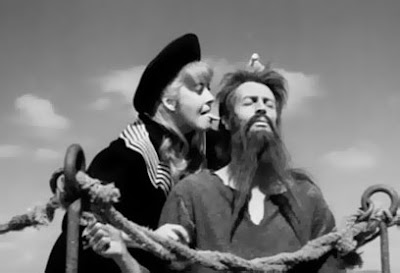 Have we heard enough? Is Brunello dead? Have the Italians taken one of their greatest wine symbols and thrown it to the devil? From the looks of it, that seems to be the perception in the shattered market of late. The timing of the whole incident was horrible, but would there ever have been a good time for deception, misrepresentation and the endless mobius strip of Italian bureaucracy? But it isn’t the first time. It won’t be the last.
Have we heard enough? Is Brunello dead? Have the Italians taken one of their greatest wine symbols and thrown it to the devil? From the looks of it, that seems to be the perception in the shattered market of late. The timing of the whole incident was horrible, but would there ever have been a good time for deception, misrepresentation and the endless mobius strip of Italian bureaucracy? But it isn’t the first time. It won’t be the last.
Colleague Do Bianchi laments about his depression over Brunellopoli. He cites a passage from Luis Buñuel’s autobiography. The vines have been pulled out, the rifles put away. But the sales are dead.

I ran some reports today. The 2004 Brunellos are trickling in painfully slow. The problem is the 2003’s have stopped and, though inventory levels are about half of what they were this time last year, people have shied away from the category of Brunello. This could take years to rehabilitate the reputation and status of Brunello.

A major part of the problem is the perception of exactly what Brunello is. It isn’t a Napa Valley Cult wine blockbuster of a wine, anymore than the Castello Amorosa is a real medieval Tuscan Castle. Years of misleading reviews that people trusted and came to expect moved the style of wine away from the reality of what it started out to be, what gave it its fame. New wineries and ancient ones, somehow people got caught up in the lie. The reports are out there, I don’t have to make anything up. But now perception, once again, is reality. The popular view was that Brunello was a big, inky, massive, unctuous wine. Now Brunello’s legacy is clouded by doubt and its future has been hijacked for a time. And though just a handful of producers have been caught, Italians on the ground speculate that there were others who got away with it. The image of Brunello and Sangiovese is tainted every bit as much as the wines that were exposed in scandals in the 1980’s, diethyl glycol and methyl alcohol. How ironic that Brunello got the DOCG the same year as one of the scandals in 1986.
 I was in the trade then. It was devastating for a young industry person to spend their first years (and specializing in Italian wines) to have the carpet pulled out from under them. To start over, to pull oneself up, dust oneself off and go back into the trenches. I really thought the Italians had learned the lesson. But another generation longed for recognition and affluence. How many Porsche Cayenne’s clog the tiny roads around Montalcino? I’ve been there, seen it, saw the gold jewelry and the designer clothes and tanned bodies. All these things cost money. But the currency was the soul. The temptation was too great for a few and now all will suffer. This is happening in a time when the world economy is drawing down, so recovery will be years in the making.
I was in the trade then. It was devastating for a young industry person to spend their first years (and specializing in Italian wines) to have the carpet pulled out from under them. To start over, to pull oneself up, dust oneself off and go back into the trenches. I really thought the Italians had learned the lesson. But another generation longed for recognition and affluence. How many Porsche Cayenne’s clog the tiny roads around Montalcino? I’ve been there, seen it, saw the gold jewelry and the designer clothes and tanned bodies. All these things cost money. But the currency was the soul. The temptation was too great for a few and now all will suffer. This is happening in a time when the world economy is drawing down, so recovery will be years in the making.
 In Buñuel’s Movie, Simon of the Desert, Simon was a stylite, an ascetic who lived on a pillar in the desert and preached, fasted and mortified his body to get closer to God. And while Buñuel works on many levels of interpretation and symbolism in his short film, I see a parallel between the movie and the current state of the Montalcino wine trade. A little less glam and a little more dirt under their nails (or all of ours in any case) in this moment might be a real grounding moment. Keep the SUV for 6 years, not three. Take care of your shirts and keep them around for more than a season. Save money on French barrels; buy fewer and use them longer. Or better, use the larger botti and let the purity and beauty of the true Sangiovese represent all that is good about Brunello. Come back to earth and the vines and tend them and respect them and the wonderful life that awaits those fortunate enough to call Montalcino home.
In Buñuel’s Movie, Simon of the Desert, Simon was a stylite, an ascetic who lived on a pillar in the desert and preached, fasted and mortified his body to get closer to God. And while Buñuel works on many levels of interpretation and symbolism in his short film, I see a parallel between the movie and the current state of the Montalcino wine trade. A little less glam and a little more dirt under their nails (or all of ours in any case) in this moment might be a real grounding moment. Keep the SUV for 6 years, not three. Take care of your shirts and keep them around for more than a season. Save money on French barrels; buy fewer and use them longer. Or better, use the larger botti and let the purity and beauty of the true Sangiovese represent all that is good about Brunello. Come back to earth and the vines and tend them and respect them and the wonderful life that awaits those fortunate enough to call Montalcino home.

— Alfonso Cevola, the Italian wine director for Glazer’s in Texas, has been involved in the selling, educating and advancing the cause of Italian wines since 1978. His blog is On the Wine Trail in Italy. He is a Certified Specialist in Wine and a Special Contributor to the Dallas Morning News and Sommelier Journal. In recognition of noteworthy support of the wines of Italy in America, the Italian Trade Commission honored him with the Distinguished Service Award in 2009.
